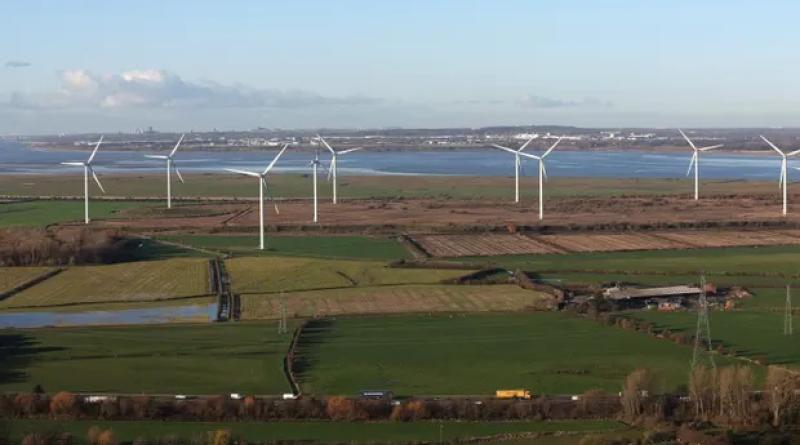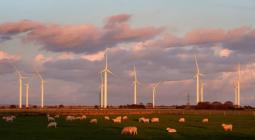Households in Yorkshire ‘most willing to live near windfarm’

Midlands and north-east of England also show strong demand, says supplier Octopus Energy
Households in Yorkshire, the Midlands and the north-east of England are most willing to live near a windfarm in return for cheaper power, Octopus Energy has said.
The energy supplier has said the public are increasingly open to windfarms being built near them, as the government appears poised to lift a seven-year ban on new onshore wind developments in England.
Octopus Energy has been canvassing the public and landowners in an attempt to match up supply and demand, and speed through the planning process for onshore windfarms if the ban is lifted.
Octopus research shows about 4,450 hectares (11,000 acres) of land could be used for wind turbine developments, housing about 2,300 wind turbines and generating enough energy for nearly 2m homes. It received more than 16,500 submissions from communities open to a local windfarm development alongside cheaper energy.
David Cameron’s government introduced the moratorium in 2015 but Rishi Sunak signalled its end earlier this month in an attempt to head off a row with Tory MPs including predecessors Boris Johnson and Liz Truss.
A consultation on the issue runs until March 2023, with the national planning policy framework updated to reflect the outcome by the end of April 2023.
The Octopus Energy Generation chief executive, Zoisa North-Bond, said: “We’re using data to match up demand with times when the wind is really blowing and there is an abundance of energy passing through the grid, meaning we can provide energy at a cheaper cost.”
Octopus reported the most demand in the Yorkshire and Humber region, where it received 4,500 submissions from the public. The Midlands and the north-east of England also showed strong demand.
North-Bond added: “Most of the submissions are in the north of the country, which could represent a great investment opportunity and everything that could bring with it.”
As part of the wind drive, dubbed “fan club”, Octopus last year began cutting the energy bills of its customers who live within 5km of three existing windfarms in Yorkshire and south Wales.
Customers are alerted when local power is cheaper because of higher winds and are encouraged to carry out energy intensive chores – such as using a dishwasher or tumble dryer – during these periods. The company estimates they can save up to £350 on their annual bill.
North-Bond also said that people in coastal areas, including the south-west, had been receptive to the idea.
Octopus’s generation arm has £5bn of assets in onshore and offshore windfarms, as well as solar panel projects. The company has invested £1bn in offshore wind projects in the past six months.
North-Bond said that Octopus is also working to “repower” existing UK turbines with newer technology to make them more efficient.
The company has set up a €220m (£194m) fund to invest in renewable developments “to reduce Europe’s gas reliance”. It invested in the solar and battery developer Exagen earlier this year and is expected to make further investments in 2023.
Octopus was the first supplier to pilot National Grid’s “demand flexibility service”, which is designed to ease pressure on the electricity network by incentivising households to shift their power usage away from peak times.
In October, Octopus swooped to acquire Bulb, its former rival, which collapsed into a government handled-administration with 1.5 million customers.
Those customers transferred to Octopus this month but the deal with government remains subject to a judicial review after rivals British Gas, ScottishPower and E.ON argued there was a lack of transparency around the terms of the acquisition.
The government has promised as much as £4.5bn to fund the takeover of Bulb, which will be ringfenced from the main Octopus operation.
COVER PHOTO: Wind turbines generate electricity at Frodsham windfarm in Liverpool. Photograph: Nathan Stirk/Getty Images





